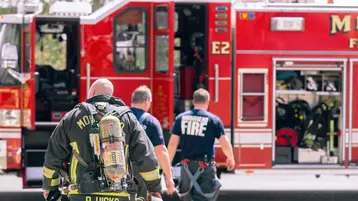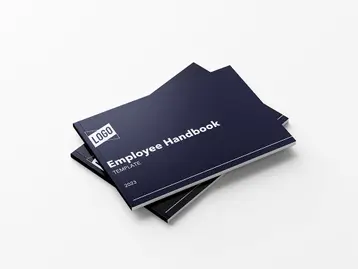
When a fire breaks out, regardless of the source, it can be shocking and devastating for everyone involved. This makes it critical for staff members to understand the proper procedures if a fire occurs. Proper training increases fire safety and can lessen the chance of injuries or death if a fire breaks out. Sometimes, it can seem as if fire drills slow productivity and take up time. Waiting for an entire office to meet up outside and chat may seem like a process that wastes valuable time. Even mentioning the possibility of a fire drill can bring on groans, as some find it a useless exercise. Many people think of fire safety, and the vision of fire alarms, extinguishers, and sprinklers comes to mind. However, practicing regular fire drills is just as important. Safety drills ensure everyone is prepared for a fire. In this article, details will be provided about how often these drills should happen as well as other critical information.
What are the objectives of a fire drill?
For those who may be unfamiliar with fire drills, they are a means of practicing what would happen in the case of a real fire. Drills are designed to ensure all members of a business know the proper steps to take in an emergency. Fire drills should go over all emergency procedures to cut down on panic and confusion if a real fire happens. This includes everything from meeting points to evacuation routes. The main objectives of a fire drill include the following:
- Ensuring compliance with all local fire code requirements
- Providing employees a chance to practice emergency processes in a safe and simulated environment
- Evaluating how effective evacuation processes are to make any needed changes to improve performance in an actual fire
- Determining if workers understand and can carry out emergency duties
Why are fire drills important in the workplace?
Everyone should know what to do if a fire starts at work. The main thing that should be done is to get out of the building. However, in an emergency, there may be several questions that need to be answered. Fire drills are a better time to find out the questions and ensure there are answers to them.
- How do people know a fire has started?
- Who turns on the fire alarm?
- Where should everyone go?
- What’s the best route to take?
- What happens if an evacuation route is blocked?
- Are any areas to be avoided?
- Who makes sure everyone gets out?
- Should someone attempt to put out the fire?
- What should happen to visitors?
- Are there any people who will have difficulty leaving?
Asking these questions during a drill is far better than in a real fire. In the latter situation, lives are at risk. This is why fire drills are needed at work. Employees and others in the building can get accustomed to what should occur if a fire happens. In addition, it provides fire marshals and employers with a set of responsibilities. It’s also an excellent way to ensure the evacuation plan works. If a better option is determined, the plan can then be updated.
How often should you hold fire drills at work?
The frequency of fire drills can vary depending on the organization. OSHA notes that “it is a good idea to hold practice drills as often as necessary to keep employees prepared. Include outside resources such as fire and police departments when possible. After each drill, gather management and employees to evaluate the effectiveness of the drill. Identify the strengths and weaknesses of your plan and work to improve it.” The frequency of fire drills depends on 2 separate things. The 1st is what the local fire code requires. The second is what sorts of fire hazards are located within the building. For instance, a building with difficult egress in a high rise or one with flammable materials may wish to have fire drills as often as once every 3 months. Others may find that twice-annual fire drills are sufficient. Choosing when to have fire drills will depend on several factors. Consider how high the risk of a fire is. Determine how easily people can get to a safe location. Finally, check whether anything has changed since the last fire drill. Carrying out a fire drill can give insight into how often to have them in the future. If the business hasn’t had a fire drill in a while or the procedures have changed, having one will help everyone learn how things go. It’s also a time to consider things such as whether the alarm can be heard everywhere, if anyone needs extra assistance, and whether all parties can make it out within the expected time.
Who is responsible for conducting fire drills at work?
For commercial buildings, the owner, occupier, or manager is responsible for fire drills. Per The Regulatory Reform (Fire Safety) Order 2005, this individual is known as the “responsible person.” They are required to ensure all legislation around fire safety is adhered to.
The responsible person needs to organize fire drills. In addition, they should keep records of the fire drill results. Any reorganization, maintenance, or repairs needed as a result of a fire drill report should also be arranged by the responsible person.
What happens during a fire drill in the workplace?
There are a series of steps involved in carrying out a fire drill. Below is an example of what a standard fire drill might look like for the average business.
- All parties who are onsite at the time of the intended fire drill, whether employees or visitors, should be informed about what will be occurring.
- The responsible person will get the fire drill started.
- When alarms go off, everyone in the building should move calmly to the closest available fire exit.
- All occupants of the building will next gather at the designated assembly area.
- Responsible individuals will observe the exit procedure, looking for reasons for delays, such as obstructions. They will also help others find an exit when needed.
- While people leave the building, marshals or others will ensure their area is evacuated before leaving the building and moving to the assembly area.
- A roll call will be conducted at the assembly area to ensure all known occupants of the building are present.
- When it is clear that the evacuation is done, employees will be allowed to calmly re-enter the building.
- The fire drill will be recorded in a Fire Log Book. The main focus will be to jot down any problems that happened or issues that need to be resolved.
- Any problems discovered during the fire drill will be rectified by the responsible person.
Preparation is key for safe and effective fire evacuations
Fire evacuations are extremely serious situations, and being prepared is essential. The employees and others in the building have their safety at stake, which makes it critical to engage in thorough planning. Going through regular fire drills can prevent injuries if a real fire occurs. When everyone knows what is expected of them and how that benefits them, the effort made to create fire drills will be appreciated. It can make the process more professional and efficient. Everyone can feel confident knowing how to safely leave the building during a fire. To further prepare for potential workplace emergencies, learn about active shooter training for safety in the workplace.
This communication is for informational purposes only; it is not legal, tax or accounting advice; and is not an offer to sell, buy or procure insurance.
This post may contain hyperlinks to websites operated by parties other than TriNet. Such hyperlinks are provided for reference only. TriNet does not control such web sites and is not responsible for their content. Inclusion of such hyperlinks on TriNet.com does not necessarily imply any endorsement of the material on such websites or association with their operators.






